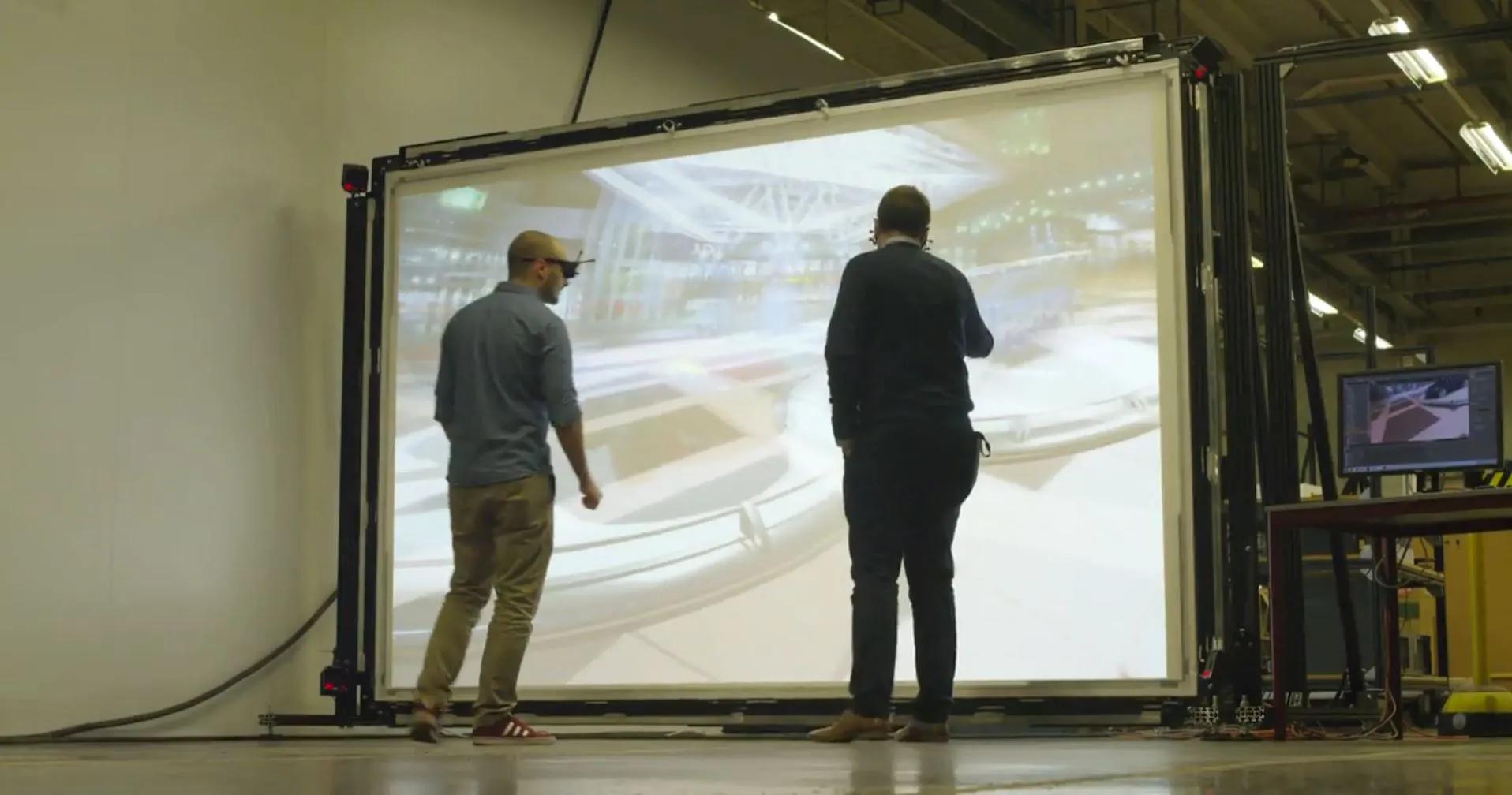Dual‑eye‑point license
Allowing 2 (groups of) people to view 3D objects with the correct perspective, enabling optimal group VR
- Displays the perfect 3D perspective for 2 tracked users on the same screen
- See-through VR glasses, so personal interaction is possible
- Ultimate collaboration tool for Group VR
The ‘Dual Eye Point’ feature allows to display 2 independent 3D stereo images on the same screen with 1 high frame-rate projector.
This feature can serve 2 use cases:
Use case 1: Two users are evaluating 3D objects in the same virtual environment whereby each user’s position is tracked and the 3D objects are displayed with the correct 3D perspective for the respective user. By tracking the user’s position, the projector can show each of them the perfect 3D image with respect to their position in the virtual environment. This is a very interesting technique in virtual reality applications, because now 2 people can perfectly assess a virtual model at the same time giving them more freedom to move around in the virtual world and do better assessments.
Use case 2 : The feature also allows to show 3D imagery from 2 different virtual worlds or 2 totally different types of 3D content. With one projector, you can create 2 separate 3D experiences on the same screen where 2 groups can look at and evaluate different 3D worlds.
Fostering collaboration
A typical drawback of HMDs (Head Mounted Devices) is that true collaboration is almost impossible. People are completely isolated in their headset and communication is very difficult because all hand signs, body language and facial expressions are lost. That is why group VR, in which all people are both immersed into the 3D image but can still see each other, is so much more ideal when aiming for collaboration and decision making. Group VR is usually done in a wide immersive environment such as a powerwall , cave or others.
A drawback of group VR, is that only one person is 'tracked'. This means that the 3D images are displayed relative to this person's physical position and other users need to stay close to the tracked person. Dual Eye Point technology allows to track 2 users , enabling to show optimal images to 2 people at the same time. In this way they can collaborate more freely and optimally.
How it works
Dual Eye Point technology benefits from a projector's capability to display images at 240 Hz refresh rate. Because a good 3D stereo experience requires a 120 Hz refresh rate (60 Hz refresh rate for each eye), the 240 Hz capability allows showing 2 images @ 120 Hz simultaneously on the same screen.
规格
下载规格表一般规格
- Dual Eye Point
- Licensed feature – also upgradable in the field for existing installations
- 兼容性
- UDX-4K series and UDM-4K series
- 分辨率
- 2 independent WQXGA (2560 x 1600) images @120Hz refresh rate
- 硬件
- Input module Quad DP1.2 (R9864002)
- 所需要的许可证书
- DEP feature (R9804020)
- 3D眼镜兼容性
- Requires Multi-Eyepoint 3D glasses (R9801964)
- 连接性
- 2 DP1.2 cables required, one cable per view/image/user - each input requires a WQXGA @ 120 Hz 3D stereo video signal
- Crosstalk
- No crosstalk – perfect separation

